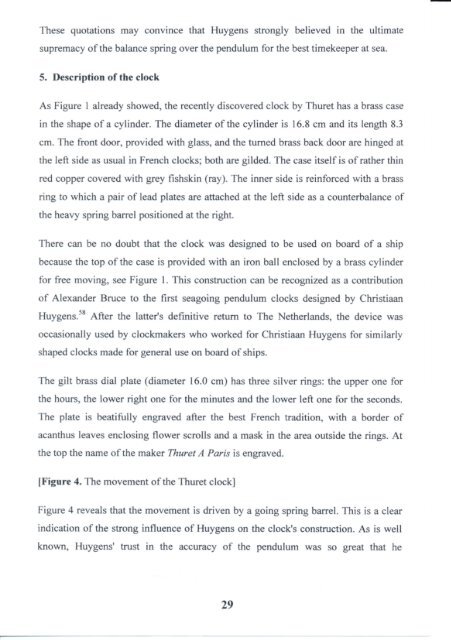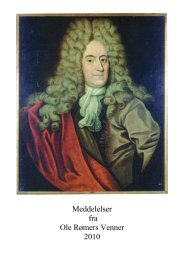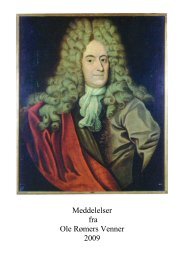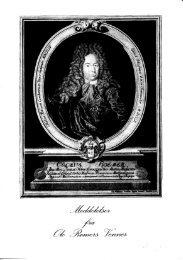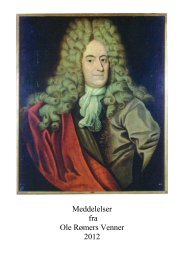Meddelelser 2008 - Ole Rømers Venner
Meddelelser 2008 - Ole Rømers Venner
Meddelelser 2008 - Ole Rømers Venner
You also want an ePaper? Increase the reach of your titles
YUMPU automatically turns print PDFs into web optimized ePapers that Google loves.
These quotations may convince that Huygens strongly believed in the ultimate<br />
supremacy of the balance spring over the pendulum for the best timekeeper at sea.<br />
5. Description of the clock<br />
As Figure I already showed, the recently discovered clock by Thuret has a brass case<br />
in the shape of a cylinder. The diameter of the cylinder is 16.8 cm and its length 8.3<br />
cm. The front door, provided with glass, and the tumed brass back door are hinged at<br />
the left side as usual in French clocks; both are gilded. The case itself is of rather thin<br />
red copper covered with grey fishskin (ray). The inner side is reinforced with a brass<br />
ring to which a pair of lead plates are attached at the left side as a counterbalance of<br />
the heavy spring barrel positioned at the right.<br />
There can be no doubt that the clock was designed to be used on board of a ship<br />
because the top of the case is provided with an iron ball enclosed by a brass cylinder<br />
fbr free moving, see Figure l. This construction can be recognized as a contribution<br />
of Alexander Bruce to the first seagoing pendulum clocks designed by Christiaan<br />
Huygens.sE After the lattey's definitive return to The Netherlands, the device was<br />
occasionally used by clockmakers who worked for Christiaan Huygens for similarly<br />
shaped clocks made for general use on board of ships,<br />
The gilt brass dial plate (diameter 16.0 cm) has three silver rings: the upper one for<br />
the hours, the lower right one for the minutes and the lower left one for the seconds.<br />
The plate is beatifully engraved after the best French tradition, with a border of<br />
acanthus leaves enclosing flower scrolls and a mask in the area outside the rings. At<br />
the top the name of the maker Thuret A Paris is engraved.<br />
[Figure {. The movement of the Thuret clock]<br />
Figure 4 reveals that the movement is driven by a going spring barrel. This is a clear<br />
indication of the strong influence of Huygens on the clock's construction. As is well<br />
known, Huygens' tnrst in the accuracy of the pendulum was so great that he<br />
29


